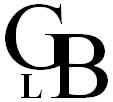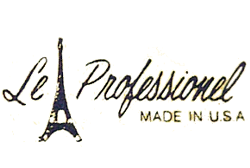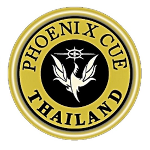Choosing the Perfect Cue Tip: A Guide
The Importance of Choosing the Right Cue Tip
As the connecting piece between cue and ball, the cue tip plays a crucial role in the game of billiards. When shopping for cue tips, it's essential to consider the various factors that contribute to a successful shot.
History

Today, there are numerous companies producing cue tip leathers in a diverse range of options, a testament to the lasting legacy of François Mingaud and his innovative ideas.
See also: https://en.wikipedia.org/wiki/Fran%C3%A7ois_Mingaud
Single-Layer vs. Multi-Layer Leather: Understanding the Differences

Single-layered leather
Single-layer leathers, as the name implies, are crafted from a single piece of leather. They can also be treated with binders to increase their hardness. The straightforward manufacturing process makes them more affordable compared to multi-layer leathers.
Multi-layer leather
Multi-layer leathers, on the other hand, are composed of several thin layers that are bonded and compressed together using glue. These leathers require a more meticulous selection process, as each individual layer must meet specific criteria. They are handpicked for optimal consistency in their characteristics, making them more expensive.The extra care and attention given to multi-layer leather tips results in longer-lasting playing characteristics and a wider range of hardness options to cater to individual player preferences. Another advantage of multi-layer leathers is that they "mushroom" moderately, meaning the leather flattens and compresses, causing a portion of the material to bulge outwards, creating a mushroom-like shape around the edge of the ferrule.
Personalize Your Game with the Right Leather Hardness
Leather tips are available in different degrees of hardness and are marked with the following symbol:
| Description | Abbreviations |
|---|---|
| Super Soft | SS |
| Soft | S |
| Medium | M |
| Medium Hard | MH |
| Hard | H |
| Extreme Hard | X |
Different manufacturers offer varying options for leather hardness, but the basic principle remains the same: the harder the leather, the greater control and precision you'll have, while a softer leather provides more spin and grip. For enhanced stability, consider a harder leather. Opting for a multi-layer leather can also bring added benefits.
Types of leather (material)
Cue tips are commonly crafted from either pig or water buffalo leather, and sometimes also feature an acrylic layer between the leather and cue. Pig leather tends to have a tough, rubbery texture and is often softer than water buffalo leather, which has a fibrous, woody texture.
Examples: Schweineleder [see: Kamui Original Leder]
Sizes
Cue tips come in following sizes:
| Diameter | Type of game |
|---|---|
| 11 mm to 14 mm | Pool |
| 11 mm to 13 mm | Carom, Five Pin Billiard |
| 8 mm to 11 mm | Snooker |
Elevating Your Tip Replacement Skills
Swapping out a cue tip can be a task that requires some know-how. To ensure a successful replacement, it's crucial to start by thoroughly removing the old leather without leaving any residue behind. To make sure the new leather will adhere properly, it's important to prepare the surfaces of the new leather and cue to be flat and free of any logos, seals, or grease.
There are various tools available to help with the replacement process and the post-processing of the leather, such as sharpener trays, Willards, tip sealers, leather applicators, and more. It's always a good idea to familiarize yourself with the tools before starting the replacement process, and to take your time in order to achieve a professional-looking result.
Treatment, form and maintenance
In order for tip to have optimum contact with the ball, they should have the so-called "dome" shape. These can be achieved with sander trays and Willards. It is also important that the leather is rough on its impact surface so that the chalk adheres better. Embossing irons, leather trimmers, Willards and also sander trays are used for this purpose. The roughening should be repeated at regular intervals.
Billiard chalk
Chalk consists mainly of silicon dioxide (fine sand) and can considerably increase the grip of the leather. Chalk of various consistencies is used to improve the bond between the ball and the leather tip. Their colors depend primarily on the cloth color of the billiard table, which makes contamination by chalk less noticeable. The consistency is primarily a matter of taste and can sometimes be more or sometimes less smooth, up to high-tech chalks. These are elaborately composed to ensure very long, very good adhesion. (e.g. Kamui).
How do I find the right cue tip?
The answer is relatively simple: try it out. If you don't know which leather you might like, we recommend the following: Choose a leather of medium hardness, play it and then try one that is harder or softer. With this you can set a direction, which leather suits your own playing behaviour and that of your cue. However, the trend should be towards "harder leathers", as these provide more feedback from the impact. The road to perfect individual leather can be very long. Even professionals are always trying out new ones.
Factors that may play a role:
- Feeling
- Precision
- Sound on impact
- Spin
- Durability
- Dimensional stability
Brand recommendations
Brunswick
Inexpensive one-layer leather tip of medium hardness. These leathers are available in all sizes and are therefore suitable for pool, snooker and carom.Buffalo
Single-layer leather of medium hardness. They are suitable for pool, snooker and carom.ELK-Master (Tweeten)
Affordable and soft single-layer leather of all sizes, therefore suitable for pool, snooker and carom. Particularly suitable for spin play.Pro Granit (Green Baize Ltd.)
Hard, precise single layer leather tips. Only suitable for snooker.Kamui
High-quality multi-layer leather of all sizes, therefore suitable for pool, snooker and carom. It is characterized by constant quality. Remains dimensionally stable even at low hardness. It has very high play precision and good grip.They are available in black (black) and brown (original). The blacks have a higher elasticity and are better suited for spin, while the brown leathers (also called original) tend to have a higher precision.
Le Professional (Tweeten)
Single-layer leather in many sizes, the hardness of which ranges from medium to hard. It is suitable for pool, snooker and carom. A mostly precise leather of constant quality.Mike Wooldridge
Medium hard single layer leather tip suitable for snooker. It can be used to play spin and precise shots.TAOM
Fantastic leather tips with consistent performance.O'Min
Available as multi-layer leather as well as single-layer leather in various degrees of hardness. It is only used for snooker. There are two versions: Water buffalo and pig leather, where the water buffalo leather has a higher precision, while the pig leather is more suitable for spin.Phoenix Cue
Multi-layer and single-layer leather, which is produced exclusively for snooker. Different degrees of hardness cover most of the player's requirements.X Tip by PureX (Players)
Multi-layer leather in various hardnesses. It is used in the pool and carom.
Talisman
Multi-layer leather of all hardnesses and suitable for all varieties: Pool, snooker, carom. These are made of water buffalo leather as well as pig leather.Triangle (Tweeten)
Low-priced medium-hard single-layer leather of all sizes for pool, snooker, carom.

















